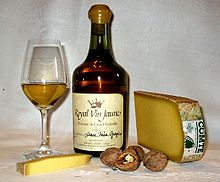**Historical and Modern Evolution**:
– Wine traditionally served with meals throughout history.
– Evolution of local cuisines and winemaking influencing classic pairings from Europe.
– Emergence of industries dedicated to food and wine pairings in modern times.
– Role of sommeliers in recommending pairings and the popularity of pairings increasing.
– Origins of the modern phenomenon in the U.S. in the 1980s.
**Principles of Pairing**:
– Principles behind classic pairings like ‘White wine with fish; Red wine with meat’.
– Importance of balancing food and wine weight.
– Determining wine body by alcohol level, tannins, and region.
– Considering flavors, textures, sugar, acid, alcohol, and tannins for successful pairings.
– Subjectivity in taste preferences and the influence of occasion and atmosphere.
**Wine Characteristics and Pairing**:
– Categorizing wines by weight: light-bodied, medium to heavy whites, lighter reds, and medium reds.
– Focus of the pairing on enhancing either the food or wine.
– Complementing or contrasting flavors in pairings.
– Physical properties of wine like bitterness, sweetness, acidity, and alcohol content.
– The role of acidity, sweetness, bitterness, and alcohol in enhancing food and wine pairings.
**Enhancing Pairings**:
– Achieving balance in pairings to complement each other.
– Complementing or contrasting flavors for successful pairings.
– Using bridge ingredients and herbs/spices to enhance pairings.
– Pairing wines with Asian cuisine based on dish flavors and versatility in wine choices.
– Recommendations for pairing wine with various dishes and cuisines.
**Additional Resources and Recommendations**:
– Reference to wine and food portals for additional resources.
– Exploring food pairing and wine sauce options for more information.
– Various sources providing in-depth insights on wine and food pairing.
– Tips on enhancing pairings through ingredient bridges and spice/herb matching.
– Versatile wine choices for multiple dishes in Asian meals.
Wine and food matching is the process of pairing food dishes with wine to enhance the dining experience. In many cultures, wine has had a long history of being a staple at the dinner table and in some ways both the winemaking and culinary traditions of a region will have evolved together over the years. Rather than following a set of rules, local cuisines were paired simply with local wines. The modern "art" of food pairings is a relatively recent phenomenon, fostering an industry of books and media with guidelines for pairings of particular foods and wine. In the restaurant industry, sommeliers are often present to make food pairing recommendations for the guest. The main concept behind pairings is that certain elements (such as texture and flavor) in both food and wine interact with each other, and thus finding the right combination of these elements will make the entire dining experience more enjoyable. However, taste and enjoyment are very subjective and what may be a "textbook perfect" pairing for one taster could be less enjoyable to another.

While there are many books, magazines and websites with detailed guidelines on how to pair food and wine, most food and wine experts believe that the most basic element of food and wine pairing is understanding the balance between the "weight" of the food and the weight (or body) of the wine. Heavy, robust wines like Cabernet Sauvignon can overwhelm a light, delicate dish like a quiche, while light-bodied wines like Pinot Grigio would be similarly overwhelmed by a hearty stew. Beyond weight, flavors and textures can either be contrasted or complemented. From there a food and wine pairing can also take into consideration the sugar, acid, alcohol and tannins of the wine and how they can be accentuated or minimized when paired with certain types of food.
